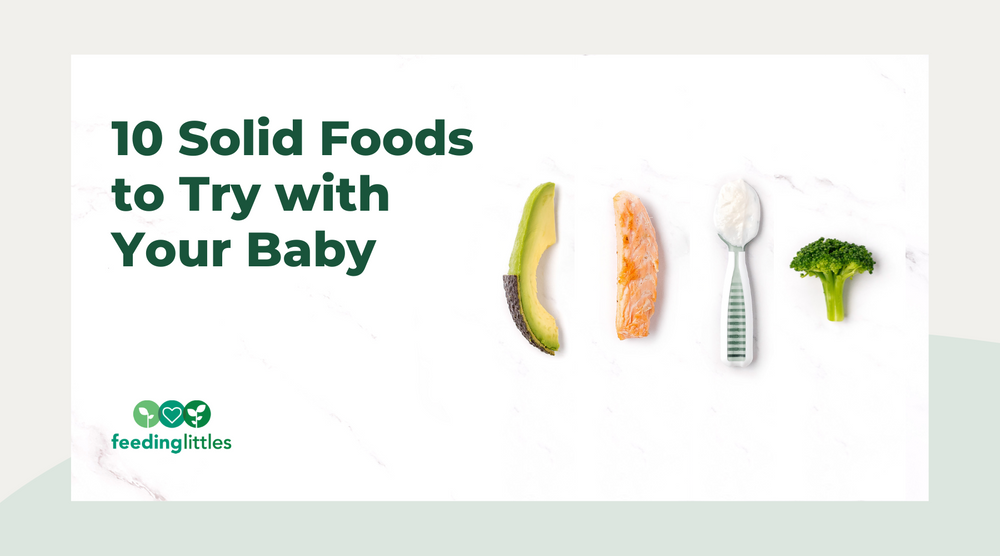
Is your baby new to solid foods? Unsure of what foods to try first? The nice thing about Baby-led Weaning, or infant self-feeding, is that there’s no such thing as the “right” foods to offer first.
However, we know that many families feel a little overwhelmed when starting solid foods and want a little bit of a road map. We totally get that, so in this post we wanted to share 10 foods you can try with your new eater. Again, these are just suggestions! Offer veggies, fruits, proteins, grains and fats that your family enjoys and are safe for your baby.
Want step-by-step, non-judgmental help with Baby-led Weaning? Check out our Infant Course!
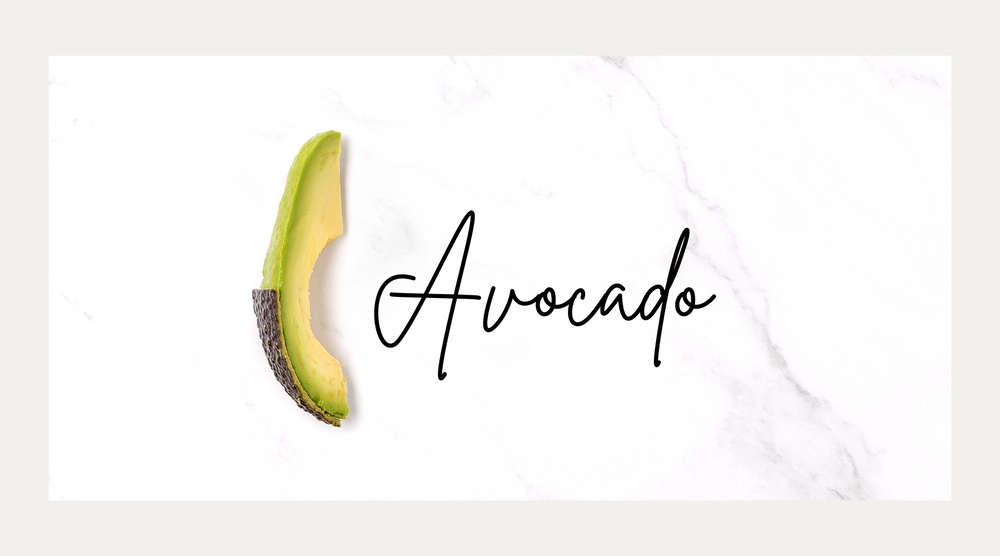
Avocado: At least half of our clients start with avocado as their baby’s first food. Why? It’s easy to prep (just wash and cut it into a strip!), it doesn’t have to be cooked and it’s easy to access. It’s also a great source of fat, micronutrients and fiber.
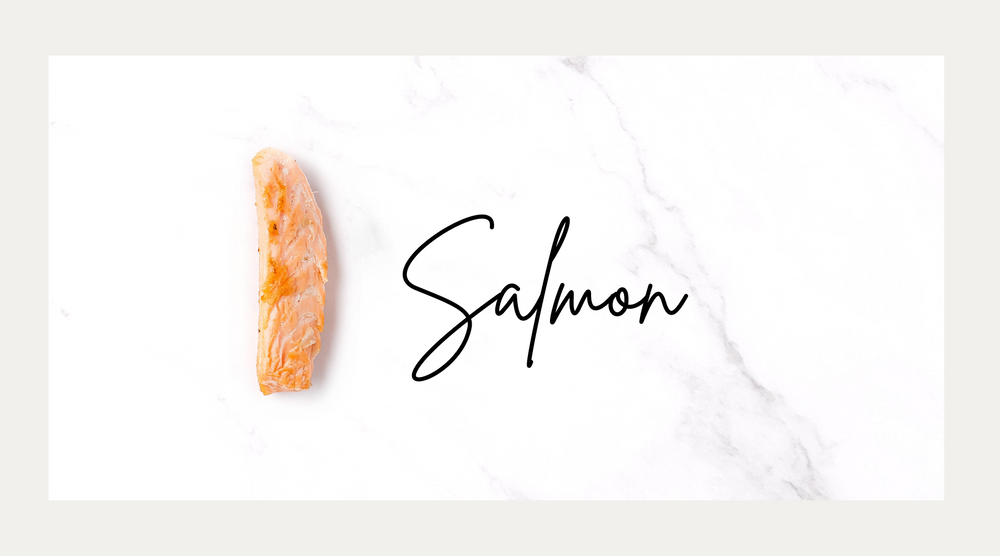
Salmon: It’s important to offer babies the top 9 allergens pretty soon after starting solid foods, and salmon is one of those allergens (finned fish)! Salmon also happens to be a good source of iron, which is a nutrient of concern for babies. Sauté or bake salmon with olive oil, garlic and lemon, and cut it into strips. Remove skin and small bones.
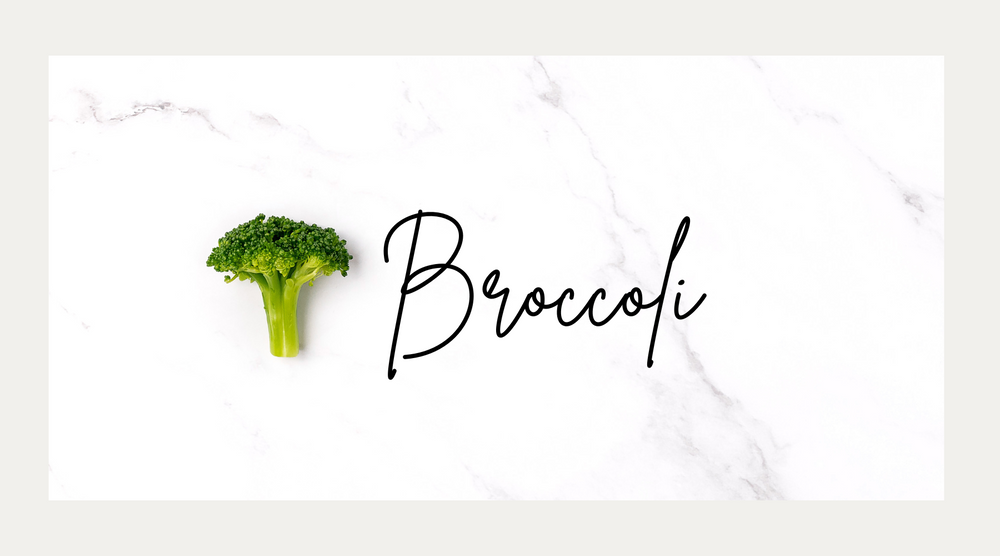
Broccoli: Want your baby to love strong flavors and cruciferous veggies? The best way to do that is to offer it to them regularly. Broccoli, cauliflower, kale, Brussels sprouts and bok choy are all cruciferous veggies that can have awesome health benefits – but they also have big flavors. Babies are usually more open-minded to veggies than toddlers, so it’s awesome to offer it to them regularly when they start eating solids. Toss broccoli in avocado oil, garlic and Italian seasonings and roast until golden brown and soft.

Banana with a thin layer of peanut butter: Have you heard that babies shouldn’t eat fruit before trying veggies? It’s actually false. Babies know what sweetness tastes like (hello, breast milk/formula), and they tend to have a natural preference for sweet things. Instead of worrying about veggies before fruit, offer a wide variety of veggies and fruit. Yes, we want babies to love veggies, but fruits can offer essential nutrients that help kids meet their nutritional needs during picky phases when they get older. Bananas are a delicious, nutrient-packed fruit that many babies enjoy. Simply cut them into strips or use your thumb to break apart a banana into long wedges length-wise. (It naturally breaks into thirds!) Spread a small amount of smooth peanut butter on it because…allergen exposure!
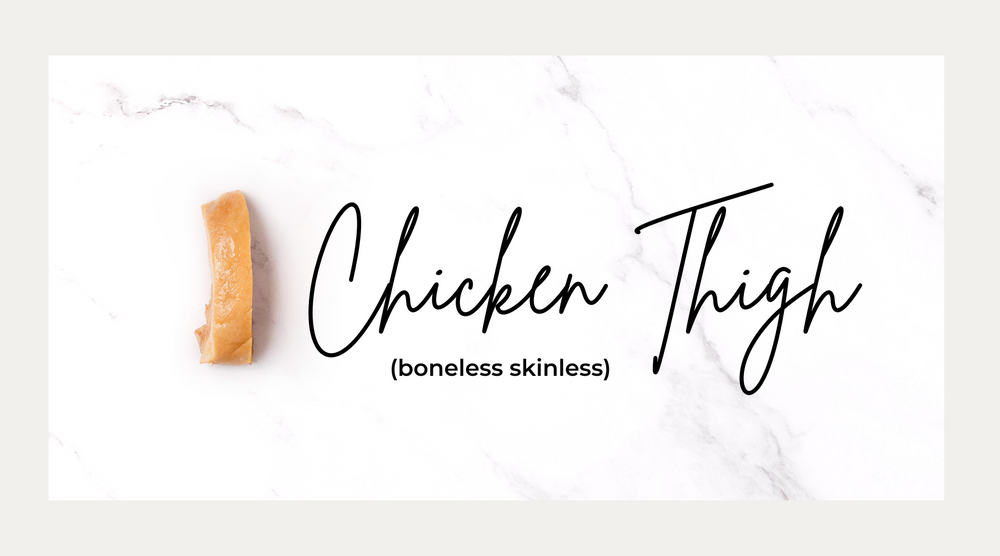
Boneless skinless chicken thigh: Meat and poultry contain the highest amount of heme (absorbable) iron and are a great choice for new eaters, as long as they’re tender and cooked with moisture. Cover chicken thighs with low-sodium chicken broth (or bone broth) and cook in the crockpot for 4-5 hours on low or the pressure cooker for 7-8 minutes on high. Cut into strips.
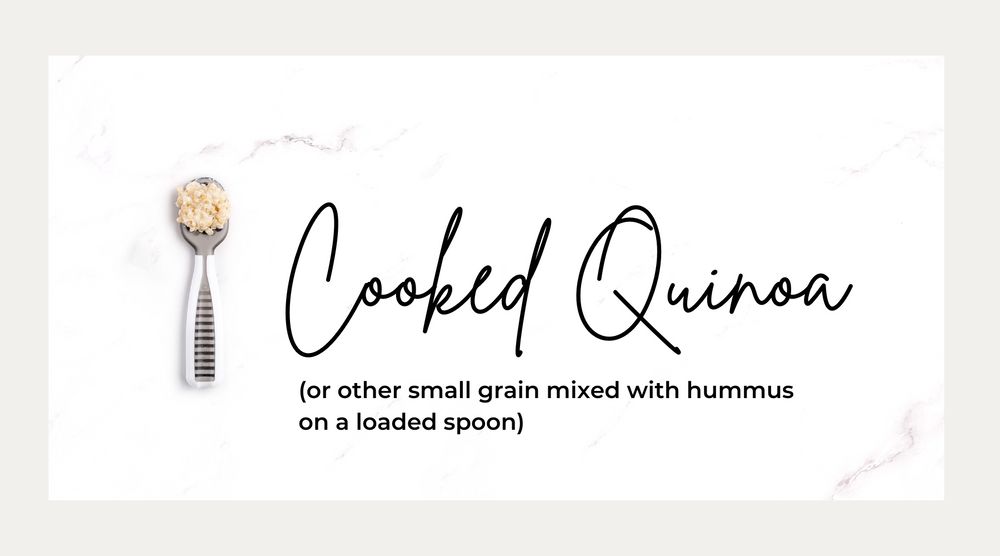
Cooked quinoa or other small grain mixed with hummus on a loaded spoon: Small grains like quinoa, rice, couscous and millet are a great option for new eaters, but they can be hard for them to pick up without a pincer grasp. (Note: quinoa is technically a seed, but culinarily it’s a grain so we’re going with grain here!) Mix it with some hummus, which contains sesame, an allergen, and offer it to your baby on a NumNum GOOtensil.
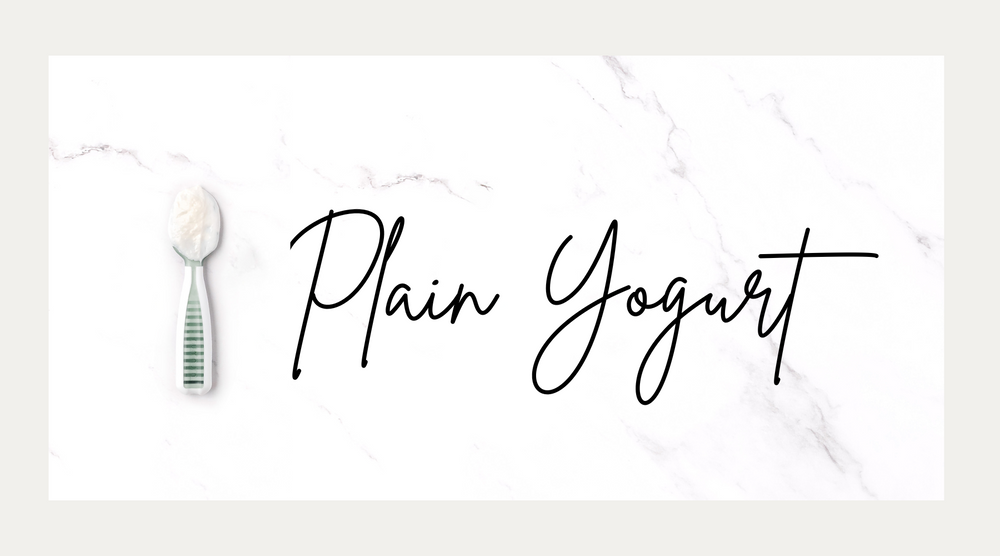
Plain yogurt: Yes, babies can have dairy, and it’s recommended since it’s another pesky allergen! However, you don’t need to buy any special “baby yogurt” – simply purchase plain, whole fat yogurt. Greek or traditional yogurt are fine. Offer them in a bowl or directly on your baby’s high chair tray and let them get messy, or serve them on loaded NumNum GOOtensils.

Sweet potato: Sweet potatoes are an awesome source of beta carotene and vitamin C. Vitamin C helps your baby’s body absorb iron, so it’s important to pair high-vitamin C foods with high-iron foods to maximize absorption. Learn more about this in our Infant Course! Cut sweet potatoes into strips or wedges, toss in your favorite oil and roast until soft and starting to brown.
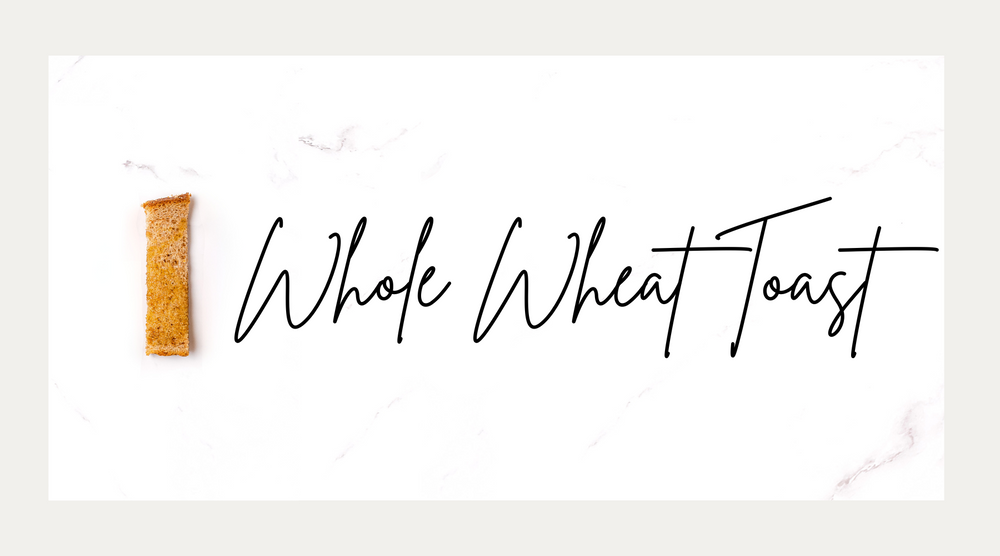
Whole wheat toast: Wheat is yet another allergen that is important to offer babies right when they start eating solid foods. Choose bread without any large seeds or honey (which can increase risk of infant botulism). Lightly toast it and top with smashed fruit, butter, smashed avocado or nut butter.
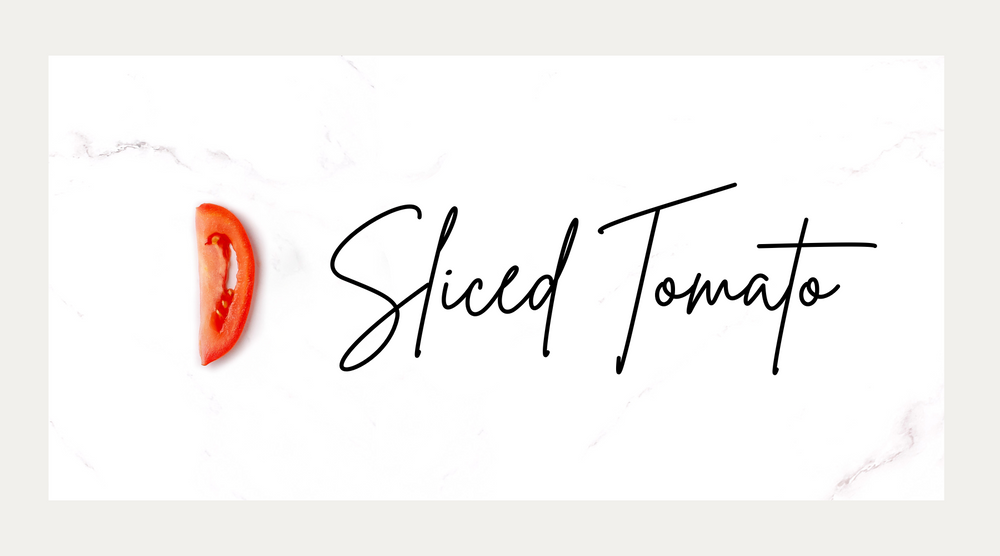
Sliced tomato: Have you heard that babies “shouldn’t” have acidic foods? Yup, it’s another old wives tale! Babies can eat tomatoes, a high vitamin-C food that is inexpensive and easy to prepare, and as long as it doesn’t irritate their skin, it’s a convenient vegetable source! Simply cut Roma or beefsteak tomatoes into wedges or strips. If offering cherry or plum tomatoes, cut them into quarters lengthwise and serve them on a loaded fork.
